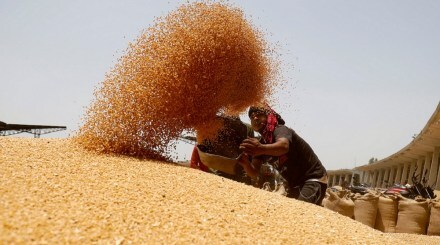Cereal prices will not likely surge further as in the recent past, but will continue to remain high well into the next fiscal year due to reasons including climate change, strong global demand and rise in domestic demand, according to a CRISIL report. “Demand from global and domestic markets and the stocks of wheat and rice are estimated to be lower by 12 per cent and 35 per cent, respectively, for fiscal 2023, leading to a surge in prices of these commodities,” said Pushan Sharma, Director – Research, CRISIL Market Intelligence & Analytics. High cereal and protein prices were the main culprit behind India’s retail inflation jumping beyond RBI’s tolerance zone, with the headline Consumer Price Index (CPI) rise coming in at 6.5 per cent. This was significantly higher than the 6 per cent value projected by a Bloomberg poll.
Even as the production of cereals is logging a CAGR of 2.3 per cent, the prices are rising faster. “The weighted average crop price index for cereal crops logged 3-4 per cent CAGR over fiscals 2017-2022. Even this fiscal, prices of cereals have risen significantly on-year in the first nine months – of wheat and paddy by 8-11 per cent, and of maize, jowar and bajra by 27-31 per cent,” the report said.
India’s wheat feeding world hunger
The price rise is also due to increased exports by India. India bridged the gap which came in due to disruptions in the global market in 2022, courtesy the ongoing war between Russia and Ukraine, which together contribute to 20-25 per cent of world wheat exports. India exported 7 million tonnes of wheat in fiscal 2022 which depleted the wheat stock in the country. While India later banned wheat exports in May, it further exported 4.6 million tonnes of wheat as of December this fiscal.
Indian rice cooking across the globe
In the case of rice too, competitive pricing of India in comparison to other countries boosted demand for the grain in the global market. In the current fiscal (April- December), overall rice exports by India have been reported to be 6-7 per cent higher on-year even when there was a 6-7 per cent decline in paddy production, an increased export duty to 20 per cent for a few varieties of rice and a ban on exports of broken rice. The increased momentum in exports has proved to be a critical factor leading to a surge in wheat and paddy prices by 8-11 per cent on-year between April 2022 and January 2023, CRISIL said.
Domestic demand soars too
Not only international markets, demand has surged on the domestic front too. Among other crops, maize and bajra have witnessed an increase in demand this fiscal following fodder shortage and 5-6 per cent growth in poultry demand, said Priyanka Uday, Manager – Research, CRISIL Market Intelligence & Analytics. “Growth in beer sales after pandemic-related restrictions of fiscals 2021 and 2022 has also led to higher demand for bajra. This rise in domestic demand has pushed up prices of these commodities,” she added.
In the case of jowar, decline in production by 5-6 per cent and increase in prices of substitute commodities such as wheat, bajra and maize has led to price rise. For kharif crops such as paddy, maize, and millets, the production expectations would be positive if a normal, well spread monsoon prevails, CRISIL report maintained. Given all these, the price sentiment of cereal crops is expected to remain strong in absolute terms.
